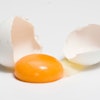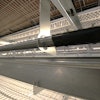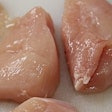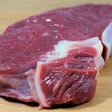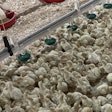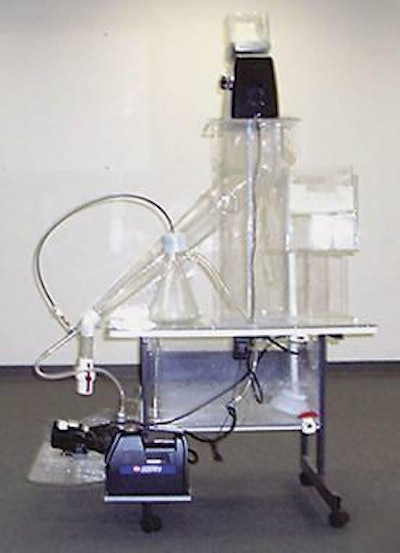
Each year in the US state of Georgia alone, more than 17,000 tonnes of eggshells are directed to landfills. Such a large amount of waste is a problem, both environmentally and economically: rotting shells generate malodours and attract pests, and companies pay upwards of US$100,000 annually to dispose of the eggshells. With many landfills nearing capacity, Georgia Tech researchers recently undertook the challenge to develop an alternative to landfills that extracts value-added by-products from eggshell waste. The study is being funded by Georgia’s Traditional Industries Program for Food Processing.
“For years, some of these eggshells have been converted by the rendering industry into animal feed supplements. And these same eggshells also have components of value to the papermaking, pharmaceutical and biochemistry industries,” explains Jeff Hsieh, a professor in the Georgia Tech School of Chemical and Biomolecular Engineering and the study’s principal investigator. Professor Hsieh and his research team are concentrating their efforts on using the main component, calcium carbonate (CaCO3), in papermaking applications.
Eggshell components: Valuable resources
According to Professor Hsieh, the eggshells are approximately 95% calcium carbonate and 4.5% membrane. The calcium carbonate in the eggshells, he says, can be a substitute for mined minerals used to improve brightness, opacity and strength in paper. It can also potentially be used to improve the appearance of the paper, making it easier to print on as well as smoother, more opaque and brighter when used as a coating. The eggshell membrane, on the other hand, contains 10% collagen, which can be used as a raw material in the manufacture of amino acids. The remainder of the membrane can be used as an additive for animal feed.
Separation: Key to success
A key problem, however, is how to separate completely the calcium carbonate from the membrane in an economically and environmentally sound method. Over the past year, Professor Hsieh and his team have taken the first steps to solve the problem.
The research team has developed a laboratory unit that successfully separates the calcium carbonate from the membrane by using a water/air mixture. The unit first grinds the eggshells; then the ground eggshells are mixed with water. The mixture of the eggshell powder and the water is put into a counter-current column with a water/air mixture pumped up from the bottom. The water and air separate the membrane from the calcium carbonate. The carbonate falls to the bottom and the membrane floats off the top, resulting in a collection of both products.
The team field-tested the unit at American Dehydrated Foods Inc.’s plant in Social Circle, Georgia, USA. (The company is a leader in the processing of under-utilised agricultural raw materials into superior value-added products.) During the test, the unit successfully separated nearly 100% of the calcium carbonate from the membrane.
Calcium carbonate applications
Having successfully separated the two components, the research team, together with EvCo Research LLC, has begun to evaluate the use of the calcium carbonate as a pigment in paper coating formulations. EvCo, a supplier of coating and wet end treatment chemicals to the paper industry, has shown that some of its coating chemicals can be used in inkjet printing formulations and give improved results.
“We are interested in determining whether coatings based on our chemistry and used with calcium carbonate from eggshells would offer some synergistic benefit for the inkjet printing application,” says John Kokoszka, vice president of EvCo.
“I have been impressed with the work done by Georgia Tech on the separation technology; it was felt by all before this project began that this would be an almost impossible task. However, Georgia Tech was able to bring together creativity and ingenuity to solve a difficult problem. Given the success with the separation, we look forward to equal progress on the use of this chemical with our technology in inkjet coating formulations,” adds Mr Kokoszka.
Imerys, a Georgia-based mineral processor, is assisting in the processing of the calcium carbonate so that it can be usable for applications in the paper or other industries.
Professor Hsieh says successful completion of this project will provide tangible benefits for both the poultry and paper industries. “This project will solve a landfill problem for the poultry industry, and recover eggshell waste destined for the landfill and transform it into a value-added product for the paper industry.
“It is also a project that can provide a ‘win-win’ situation for food and other industries by pulling the resources together from all parties. This will increase the chance of success by reducing everyone’s risk and investment during the current economic climate,” added Professor Hsieh.
Georgia Tech Research Institute
This article is based on one published in PoultryTech, which is published by the Agricultural Technology Research Program (ATRP), Food Processing Technology Division of the Georgia Tech Research Institute (GTRI). ATRP is conducted in co-operation with the Georgia Poultry Federation with funding from the Georgia Legislature, USA.
Georgia Tech Research Institute
This article is based on one published in PoultryTech, which is published by the Agricultural Technology Research Program (ATRP), Food Processing Technology Division of the Georgia Tech Research Institute (GTRI). ATRP is conducted in co-operation with the Georgia Poultry Federation with funding from the Georgia Legislature, USA.
